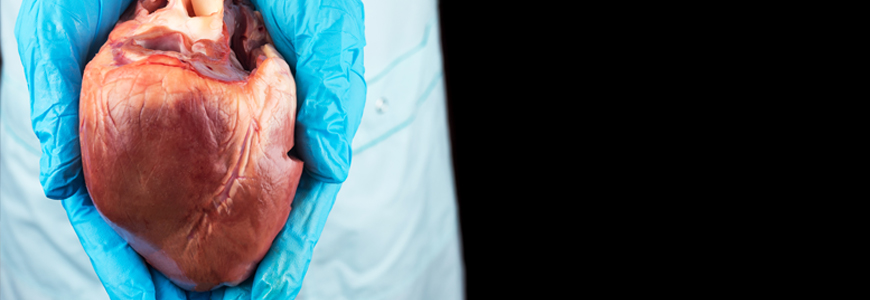The donor heart used in a transplant performed by Duke cardiac surgeons in mid-August for a 43-year-old patient dependent on a left ventricle assist device (LVAD) was transported with a preservation system that is expanding the criteria for donated organs.
The patient’s donor match had characteristics that would have triggered rejection by most U.S. transplant centers, says Jacob N. Schroder, MD, director of the Duke Heart Transplantation program and the surgeon who performed the transplant. The expanded criteria for organs associated with the device trial allowed Schroder to accept the heart and perform the procedure.
Duke is one of 12 transplant centers in the nation participating in the trial of the product developed by TransMedics (Andover, Mass.). The portable organ system offers dramatic improvements over the standard ice-and-cooler transport, Schroder says.
Duke surgeons have performed 36 transplants using extended criteria donors transported in the new preservation system. Although a control group was not established, Schroder says 81% of the extended criteria hearts in the trial (determined by distance, donor age, or heart conditions, such as hypertrophy or coronary artery disease) were successfully utilized for transplant. Previously, most of these hearts would have gone unused. As part of the trial, now entering a second phase, Duke surgeons have accepted a heart from as far away as Puerto Rico—an ischemic timeframe of more than six hours.
Schroder says the patient, who has recovered well following transplant, needed an LVAD as a bridge to a new heart following years with long-term ischemic cardiomyopathy associated with coronary disease. Several risk factors associated with the donor organ could have excluded the use of the heart without the trial’s expanded criteria.
Donor heart perfused in pressurized, managed environment
Significantly, the heart had experienced 75 minutes of “down time” before CPR was initiated. “This heart would have been an immediate turn-down for most US centers,” Schroder says. “We always review multiple factors that could lead to primary graft dysfunction (PGD). An important one is an extended period of down time before the restoration of vital signs. In this instance, 75 minutes is a long time.”
The organ transport system offered additional value because the removal of the recipient’s old heart and LVAD required more than three hours, compared to one-and-a-half to two hours normally. “The key challenge in this case was the extra time required to complete the dissection and removal of the LVAD from the patient before the new heart could be implanted,” Schroder says.
Because the donor heart was being perfused in a pressurized, managed environment, the surgical team had the rare luxury of time. “We weren’t worried about the donor heart sitting on ice,” he says. “When we face such roadblocks as a complex LVAD removal, we usually have to accelerate our processes. This preservation system takes away that pressure.”
The transport system is in its infancy, Schroder says. “It will expand the donor pool, and more people will get transplanted.” He adds that the system will set the stage for further investigation into pharmacologic and biologic modifying transplanted hearts.
“In the future, after a donor experiences circulatory death, this isolated preservation system enhances our ability to rehabilitate hearts molecularly with medications. In that respect, it’s really important for the future.”
Schroder reported Duke’s results from the initial six months to the International Society for Heart and Lung Transplantation in April. “The most important finding is that the risk of either moderate or severe primary graft dysfunction (PDG) among the extended criteria recipients within the trial was 14.7%,” Schroder says. Those results are significantly lower than the PGD rates reported at most major heart transplant centers in the United States, he adds.
The risk of severe PGD in the trial was 10.7%, Schroder adds. This trial does not include a control group to provide comparative data, but he says the results clearly indicate the utilization of organs that would have been otherwise rejected.
